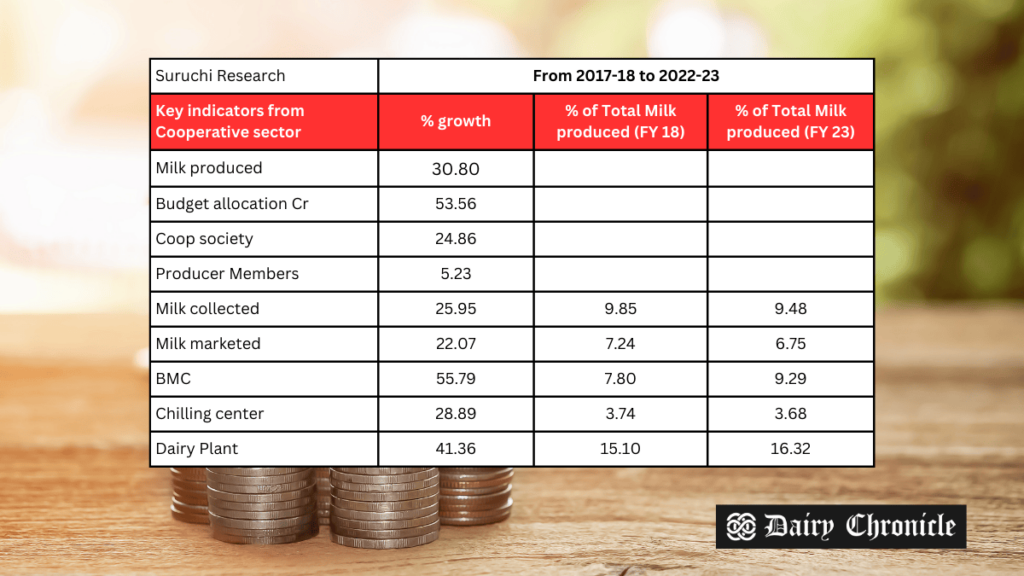The 2025 Union Budget of India has largely overlooked the dairy sector despite its significant contribution to the economy and rural livelihoods. With limited funds allocated to dairy infrastructure, feed, and farmer support, the sector faces major challenges in sustaining growth. Key issues include a lack of direct financial support for dairy farmers, insufficient investment in fodder, and declining procurement rates despite budget increases. Experts emphasize the need for targeted policy interventions, increased infrastructure funding, and sustainable dairy practices to ensure long-term viability.
On February 1, 2025, the Government of India unveiled its Union Budget for the fiscal year 2025-26, allocating ₹1.71 trillion to agriculture and allied sectors—a 22% increase from the previous year’s revised estimates. Notably, the Ministry of Fisheries, Animal Husbandry, and Dairying received a 37% boost, bringing its budget to ₹7,544 crore.
Despite these overall increases, the dairy sector continues to face significant challenges. The budget primarily focuses on crop resilience, digital infrastructure, and cooperatives, with limited attention to dairy-specific needs.
Dairy Budget Trends: A Closer Look
A critical analysis of budget allocations from 2017-18 to 2022-23 reveals that:
- The dairy budget increased by over 50%, but milk production rose by only 30%.
- The inclusion of producer members in formal milk procurement systems saw a marginal 5% increase.
- There was a decline in the percentage share of milk procured, milk marketed, and the installed capacity of chilling centers.
These figures indicate that the increased budget has not effectively translated into the necessary infrastructure and support for dairy farmers.
Key Challenges Facing the Dairy Sector
Despite being a crucial part of India’s agricultural economy, contributing 5% to the national GDP and employing over 8 crore farmers, the dairy industry remains underfunded. The main challenges include:
- Limited Infrastructure Support: Only 8% of the Animal Husbandry allocation is dedicated to dairy development, which is inadequate for improving processing, storage, and logistics.
- Lack of Fodder Investment: Despite fodder costs accounting for 60-70% of milk production expenses, there is no dedicated budget for sustainable fodder availability.
- No Direct Dairy Farmer Support: Unlike crop farmers who benefit from subsidized inputs and Minimum Support Prices (MSP), dairy farmers continue to struggle with low procurement prices and high operational costs.
Economic Significance of Dairy
The milk industry remains one of the largest contributors to India’s agricultural economy. In the fiscal year 2022-23:
- The dairy industry generated ₹11.16 lakh crore ($133.16 billion), surpassing the combined value of staple crops like paddy and wheat.
- Livestock accounted for 5.5% of total Gross Value Added (GVA), growing at an impressive CAGR of 12.99%.
Despite its importance, the sector faces numerous structural issues, including fluctuating milk prices, inadequate cold chain infrastructure, and limited access to advanced processing technologies.
The Way Forward: Recommendations for Dairy Sector Growth
To ensure the sustainable and resilient growth of India’s dairy sector, a multi-pronged approach is necessary:
1. Policy & Budgetary Reforms
- Recognize dairy as a core agricultural sector with a dedicated national dairy mission and budget.
- Increase the Dairy Infrastructure Fund by allocating at least 20% of the total livestock budget to encourage greater private and cooperative participation.
- Launch a National Fodder Development Program to ensure sustainable fodder supply.
2. Strengthening Market Linkages & Farmer Support
- Expand milk price stabilization and subsidy schemes to prevent price crashes during flush seasons.
- Improve procurement, storage, and processing infrastructure to better integrate small farmers into the value chain.
- Expand e-NAM for dairy trade to enhance price discovery and reduce middlemen exploitation.
- Maintain strategic buffer stocks of Skimmed Milk Powder (SMP) and butter to stabilize supply-demand fluctuations.
3. Climate Resilience & Sustainable Dairy Practices
- Provide incentives for climate-resilient dairy farming and methane reduction technologies.
- Promote indigenous cattle breeds and genetic improvement under the Rashtriya Gokul Mission.
- Invest in water-efficient fodder cultivation to tackle water scarcity.
4. Investment in R&D & Technology Adoption
- Increase funding for dairy research on high-yield, disease-resistant indigenous cattle.
- Support AI-driven milk quality testing, blockchain-based traceability, and smart dairy management systems.
India’s dairy sector stands at a critical crossroads. Despite being the world’s largest producer of milk, policy neglect and underfunding threaten its long-term sustainability. A revamped dairy strategy—backed by adequate budgetary support and forward-looking policies—can ensure that millions of dairy farmers benefit from India’s growing demand for milk and dairy products.
By prioritizing dairy development in future budgets, the government can transform this high-employment, high-nutrition sector into a global powerhouse, ensuring economic prosperity and food security for the nation.
